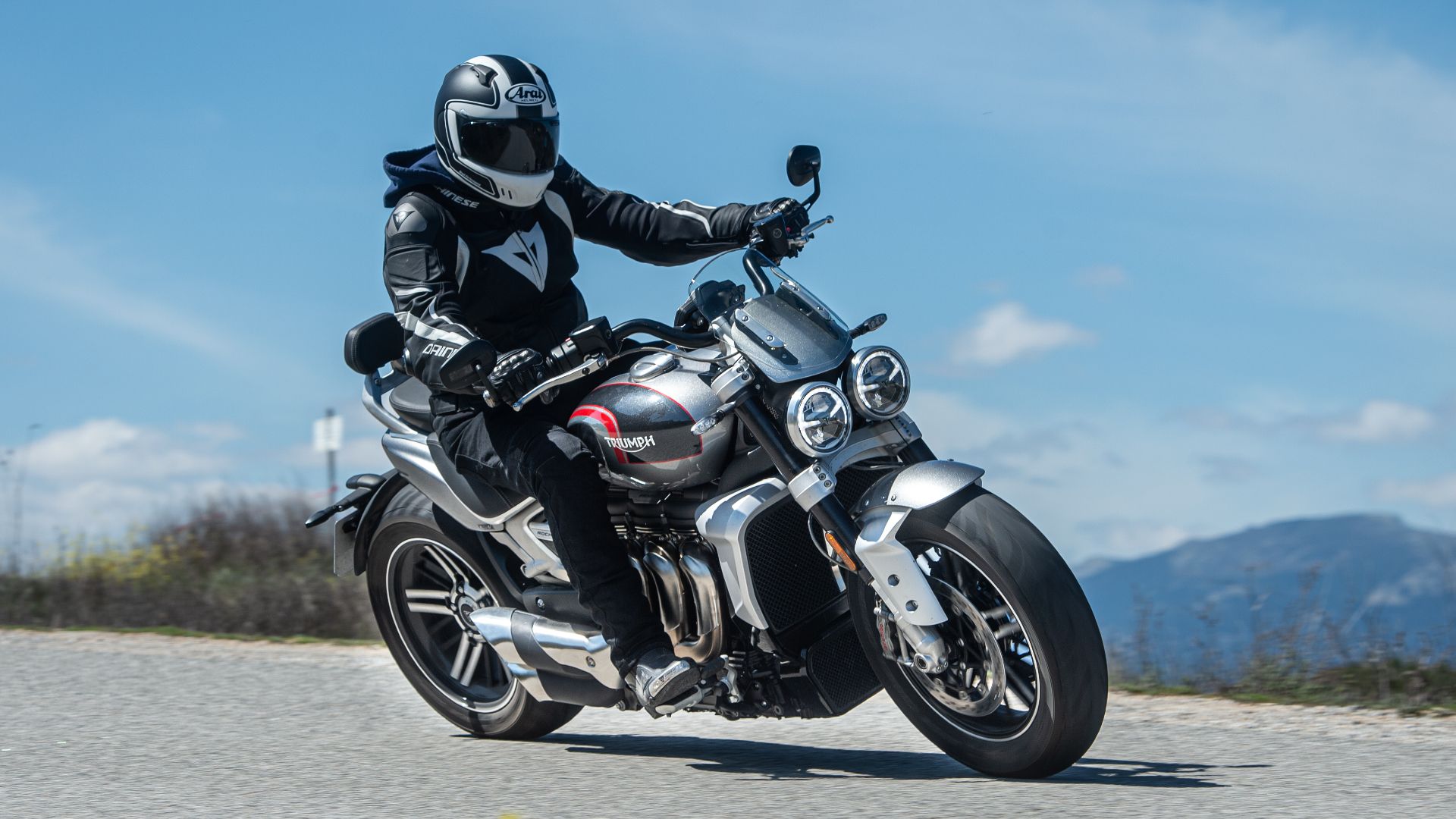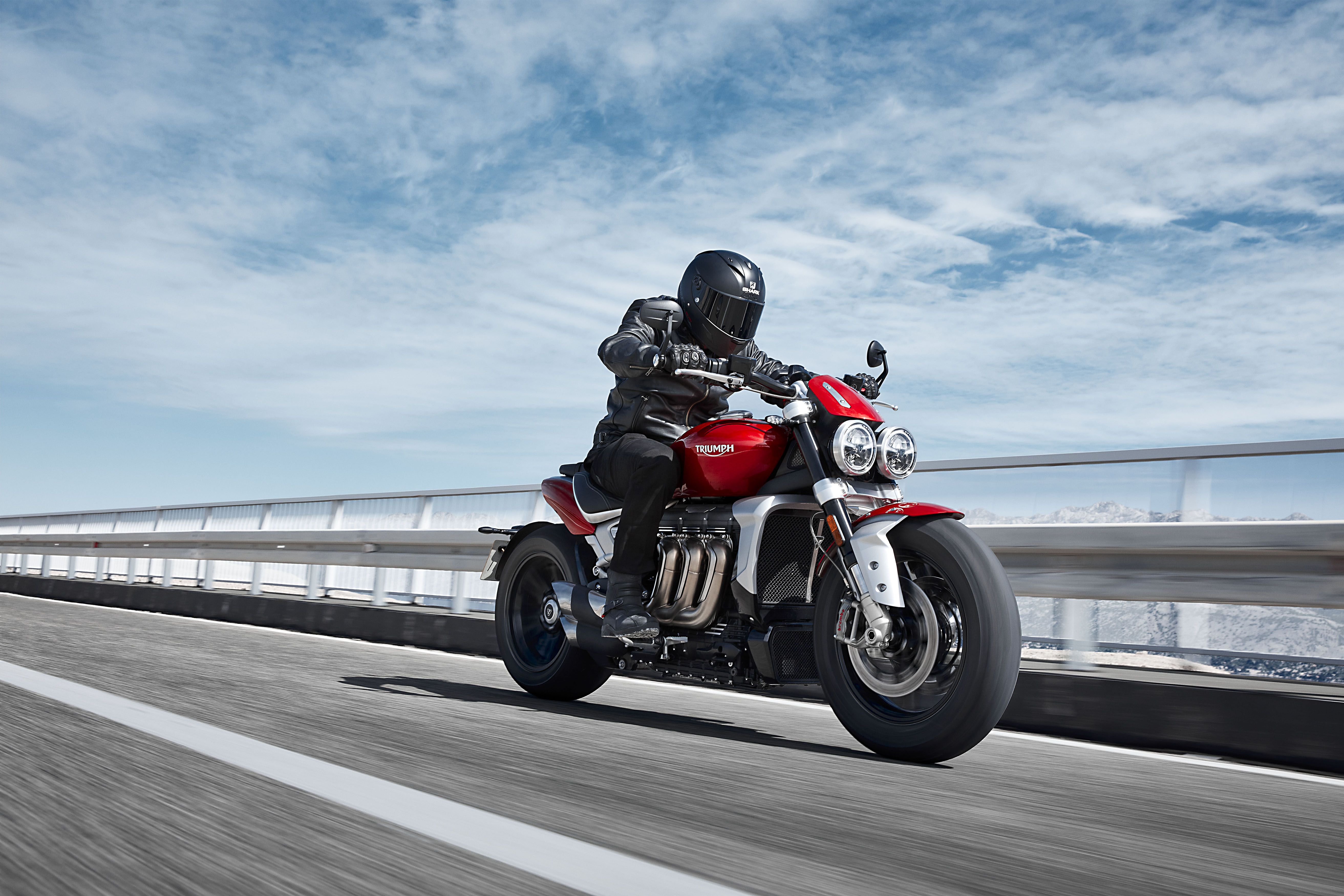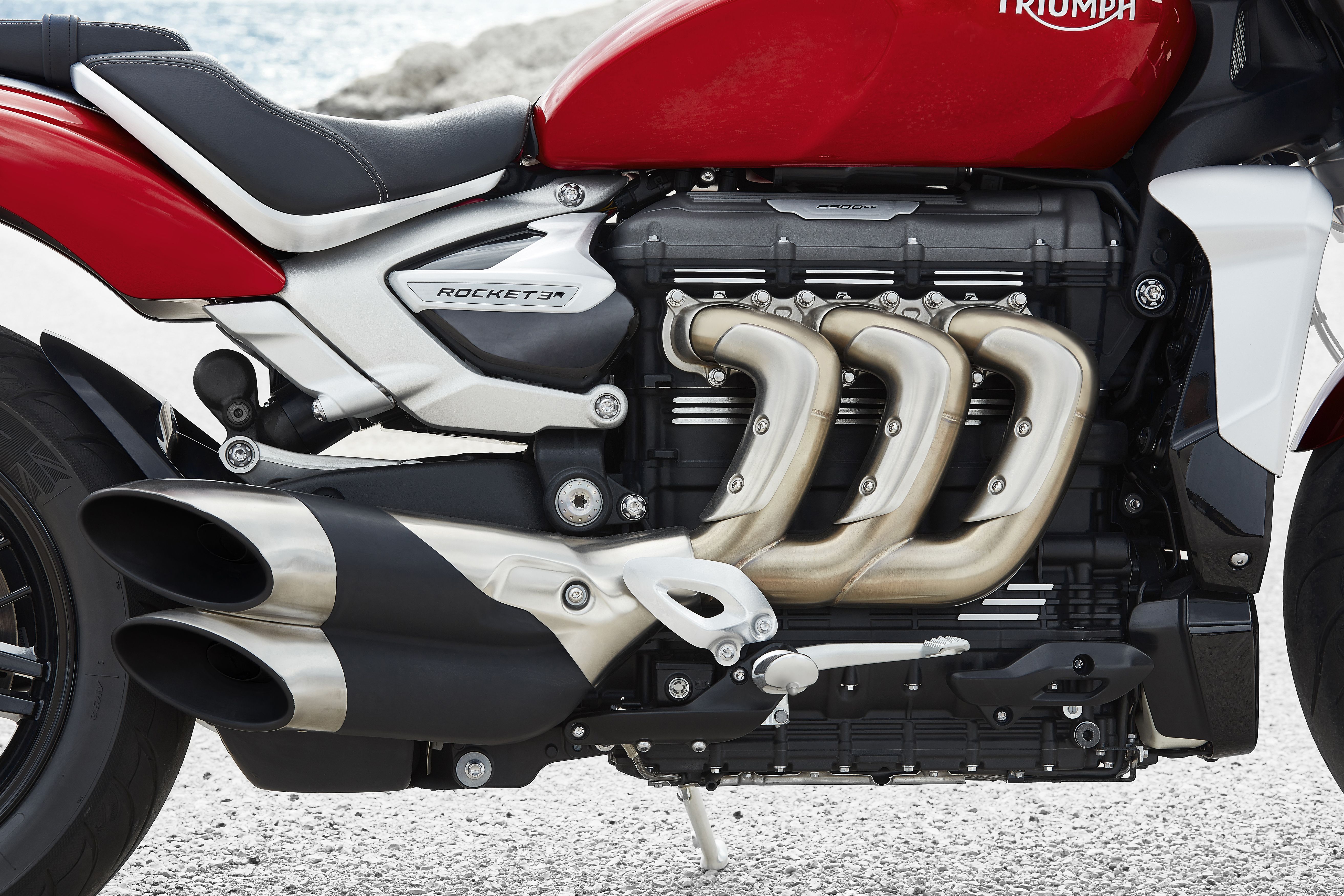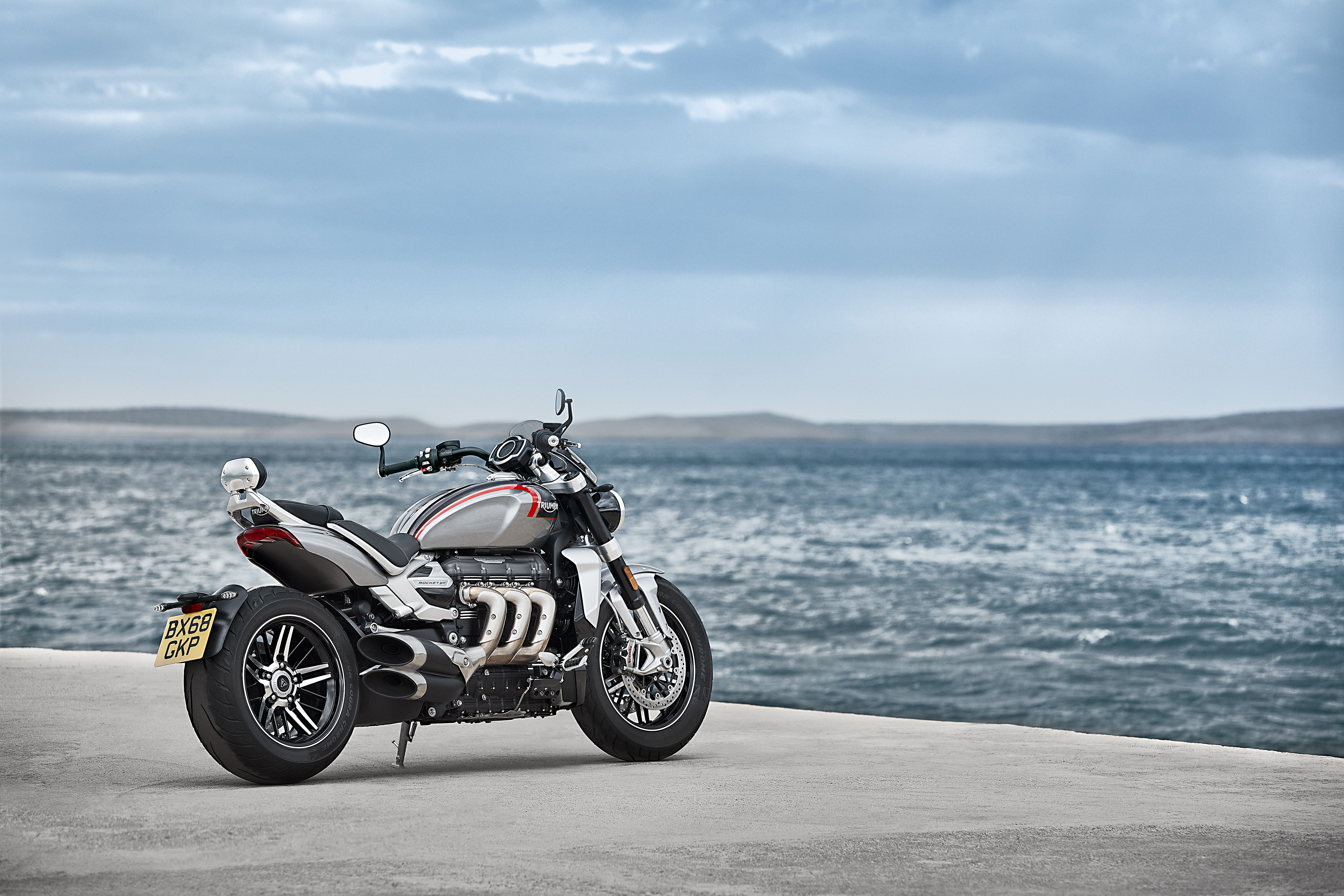Triumph doesn’t do things the usual way. When designing the original Rocket lll, the company was determined to have the largest production engine powering the new model and this led to the 2,294cc, inline three-cylinder engine we are now familiar with. The Rocket lll was excess on every level and gave Triumph an instant lead in the power-cruiser market. With the launch of the next generation Rocket 3 in 2019, that lead has been extended and now, three years later, Triumph shows no sign of losing that lead.
10 The Triumph Rocket 3 Has A Mountain Of Torque
While it is horsepower figures that gain all the attention, it is torque that really matters. 200 horsepower is the new norm for sports bikes, but this is tempered by the fact that the torque figure might be around 80 pound-feet. The Triumph Rocket 3’s 2,459cc inline three-cylinder engine pushes out ‘only’ 165 horsepower but an insane 162 pound-feet of torque, which is enough to tow a caravan! The starter motor alone puts out as much power as the very first Triumph single-cylinder engine in 1902!
9 The Triumph Rocket 3 Is Big, But it’s Also Fast
With a dry weight of 641 pounds, the Rocket 3 is no featherweight, but that’s not to say it’s slow. All that torque, available virtually from a standstill, will catapult the bike to 60mph in just 2.73 seconds. What’s possibly even more impressive is the way Triumph has made the torque curve almost completely flat, meaning there is power no matter where in the rev range or in what gear you are riding. This makes it supremely easy to ride, not something you’d expect from a motorcycle with that much power and weight.
8 The Triumph Rocket 3 Loves Corners
Again, that size and weight make you think that the Rocket 3 must be a real handful in the corners, but Triumph has worked hard to give the Rocket 3 handling dynamics that you would expect from a pure sports bike, not a long, heavy muscle bike. Triumph has managed to pare a whopping 88 pounds off the overall weight with the new generation, largely by the use of a new aluminum frame and drive shaft. Agility is unbelievable for such a large bike, and it will track around corners much better than any other large, heavy muscle bike and run rings around traditional heavy cruisers. Even at low speeds, the bike’s balance is superb, making low-speed maneuvering a doddle.
7 Triumph Chose Brembo For Braking Duties On The Rocket 3
Nothing but the best was acceptable for the new Rocket 3 and so Triumph turned to industry experts Brembo for braking duties. Calipers are state-of-the-art Stylema monobloc units that offer enormous amounts of gripping power with a light and easy-to-modulate brake lever. One-finger braking from any speed is possible and the brakes will absorb a huge amount of punishment before you even begin to think about brake fade, which is a remarkable achievement for such a heavy bike.
6 Showa Suspension For The Triumph Rocket 3
If the brakes are important, then the suspension is equally so and Triumph had cut no corners by specifying Showa suspension front and back. Somehow, Showa has struck upon a set-up that allows the suspension to be compliant over rough bumps but also perfectly controlled when cornering quickly, giving the Rocket 3 incredible chassis dynamics more akin to a sports bike. The way you can throw the Rocket 3 through a sequence of bends is uncanny and you have to keep reminding yourself that you are on a near-700-pound behemoth and not a featherweight 250cc.
5 The Triumph Rocket 3 Is All-Day Comfortable
There are two Rocket 3 models to choose from: the GT and the R. They differ in terms of ergonomics: the GT’s handlebars are set slightly further back, giving a more upright riding position and the footpegs are forward mounted, with two fore-and-aft mounting positions. The R has a more aggressive riding position with mid-mounted footpegs. Both are remarkably comfortable, with low seat heights, and this helps with the feeling of really being in control of the bike at any speed. You can mix and match the handlebars - putting the GT handlebars on the R - to really tailor your ride to suit you.
4 The Triumph Rocket 3’s Electronics Are What You’d Expect
No motorcycle is complete these days without a full suite of electronic rider aids and the Rocket 3 is no exception. A six-axis internal measurement unit provides lean-sensitive traction control and ABS and, amazingly, there is also wheelie control, even though it is scarcely believable that a bike this long, low, and heavy could wheelie! There are four riding modes: three preset and one that is rider-configurable, allowing the rider to dial in (or out) as much TC and ABS as they want.
3 The Triumph Rocket 3 Doesn’t Look Like A Big Bike
That’s a huge lump of an engine and the rest of the bike has to be large to keep things in proportion but the amazing thing is, the Rocket 3 doesn’t look like a big bike. The lines are perfect and every element blends into every other element perfectly so that no one element overpowers another. It’s the same when sitting on the bike: it simply doesn’t feel like a 700-pound muscle bike and is completely unintimidating…until you twist that throttle, that is!
2 The Triumph Rocket 3' Rivals
The Triumph Rocket 3 has several rivals, but whether any of them can match it for sheer audacity is another matter. The most obvious of the rivals is the Ducati XDiavel S which, despite having an engine almost half the displacement of the Triumph, has similar performance and equally excellent handling, electronics, and ergonomics. The XDiavel almost matches the Triumph for horsepower - 160 horsepower against 165 horsepower - but can’t hold a candle to it in terms of torque - 94 pound-feet against 162 pound-feet - while being lighter by some 150 pounds. The other obvious rival is the Harley-Davidson Fat Boy, but that is a more traditional cruiser than a muscle bike.
1 The Triumph Rocket 3 Costs A Pretty Penny
The Rocket 3 GT retails for $24,100 and the ‘R’ model retails for $23,400. This compares to the Ducati XDiavel S at $27,395 and the Harley-Davidson Fat Boy at $20,500 or thereabouts. Whichever way you look at it, you’re getting an awful lot of bike for the money.
FAQ
Q: Is the Triumph Rocket 3 fast?
Yes, the Triumph rocket 3 is very fast: it will accelerate from 0-60mph in 2.73 seconds
Q: Does the Triumph Rocket 3 have a quick shifter?
Yes, the Triumph Rocket 3 can be specified with an up and down quickshifter
Q: Is the Triumph Rocket 3 a superbike?
No, the Triumph Rocket 3 is what is commonly called a muscle bike











